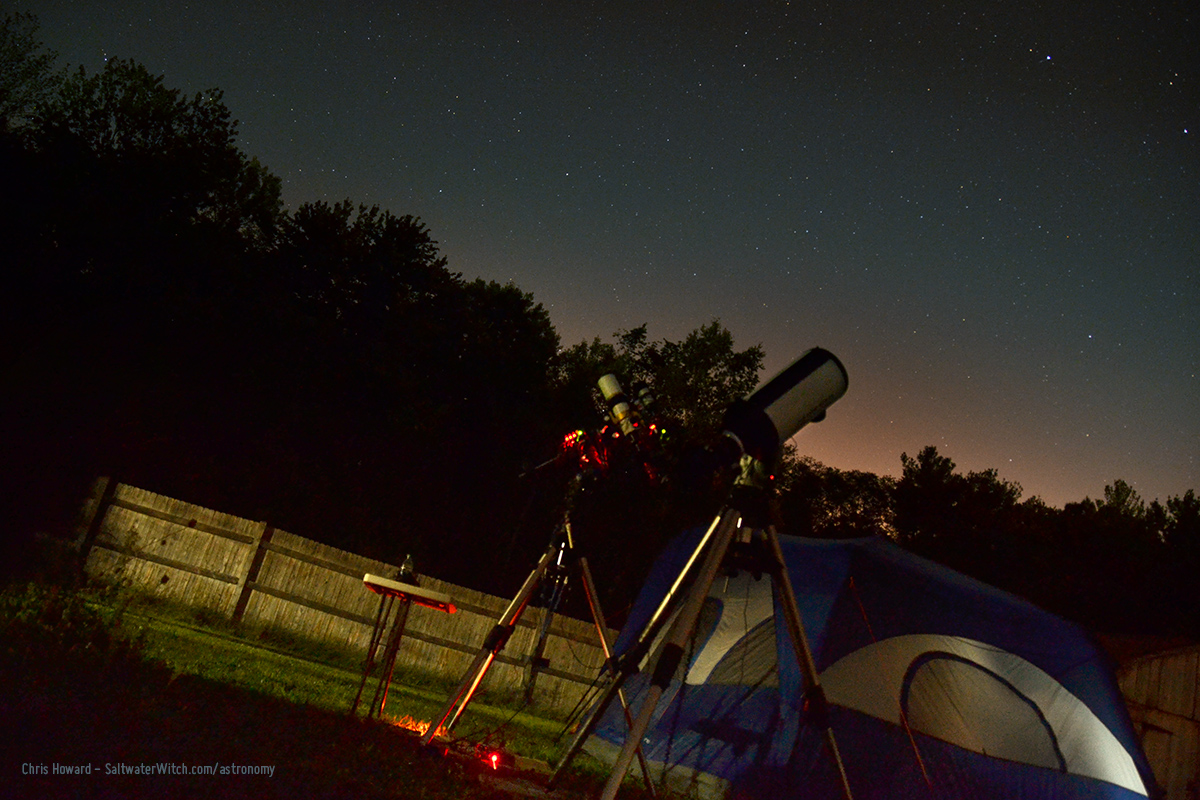Astro Gear - January 14, 2018
 Astrophotography - Leveling Up
Astrophotography - Leveling Up
Something strange and wonderful happened over the summer, and at the time I was wondering if it was a unique couple days. Well, it has continued, and looks like it’s here to stay. I seem to have made it to the next level. How do I know? Not only am I taking 5, 10, 20-minute subs with narrowband filters, they look good. Really good. Okay, so I’m not in the same set with the astrophotographers posting some of the really impressive dark nebulae, integrated flux nebulae (Yes, the mysterious IFN), and other deep sky objects out there on Astrobin and elsewhere, but I’m very happy with the images I’m getting out of my equipment.
There’s a process we go through when we set out on this whole astronomy and astro imaging path--from beginner to wherever you are now. A process when we learn how to use new equipment, when we set up an equatorial mount, work through the intricacies of guiding, alignment, processing images, automating our gear with ASCOM or INDI—and whatever software you’re using on top of these protocols for observatory control.
We learn in different ways, but there’s one part of the process all of us have or will experience--I’ve experienced this four or five times over the last few years: one day you set up your EQ mount and OTA, you start everything up, your alignment process goes smoothly, you slew to your first target, focusing just works, plate solving and tracking have pinned your view down to the exact few arcseconds or degrees in the sky where you want to shoot, and suddenly you’re leaning back during 20-minute subs, thinking about things that—as someone who’s obsessed with astronomy—you should be thinking about on a night out under the stars, like: isn’t it amazing that the light allowed through the really narrow bandpass of the Ha filter to touch the CCD sensor on my camera has travelled 23 million lightyears through 2.176 x 10^20 kilometers of interstellar space, through the earth’s atmosphere to get here--to get to the telescope and camera I just set up in my backyard. Or maybe you’re thinking, hey, the neighborhood around Cassiopeia and Cepheus really is a kick-ass part of the sky when it comes to interesting nebulae. It’ll be something like that.
That’s the day things just work, and from that day forward (apparently) they continue to work--for the most part. Things click effortlessly together, and you’re not thinking about problems with focusing, or why the guide camera keeps losing the guide star, or any of the thousand other pieces of the astro-imaging process that can ruin that night out under the stars. It’s as if you’ve leveled up. All the accumulated knowledge, failures, weirdness in the system you’ve experienced--all the troubleshooting you’ve done over the last few years has seeped into your brain to become automatized behavior. And stuff that was difficult a month ago is now second nature. It’s like that happy moment in a good D&D game when you add up the points and you’re suddenly a level 8 Paladin Astrophotographer. It’s a damn good night.
And don’t worry if it this hasn’t happened yet--or recently. That only means if you stick with this astro stuff you’ll level up soon. Even if you’d like to, you won’t forget the frustrations of last night--as time-consuming and apparently wasteful they may have appeared. You’re learning from them. You’re picking up details you may not even be aware of, and you’re packing them away for the next clear night.
Here’s to clear skies. Go find them!
Posted January 14, 2018
Astro Setup - September 23, 2017
What the backyard looked like last night. Sort of an astronomy campout under the stars. It was a pretty clear night. I hope you had clear skies wherever you were last night! (Nikon D3100, 18mm, 13 sec. exp. ISO 1600 - I used my son's camera for these shots because mine was hooked up with the AstroTech scope)

Here's one from last night's astro shoot: M42 - Orion Nebula (Yes, my favorite diffuse nebula). This time of year Orion doesn't start appearing over the horizon until the early morning hours. My Exposures started around 2am and ended around 5am. (Nikon D750, AstroTech AT6RC, William Optics field flattener/ 0.8x reducer; 162 light frames stacked in DSS, 140 dark frames).

And another shot from last Saturday night--of the Orion Nebula (M42) and De Mairan's Nebula (M43). This was the view from my other scope, William Optics GT-81 with the Atik 414EX monochrome CCD camera--which is just going to pick up a lot more of that good old ionized interstellar hydrogen.

